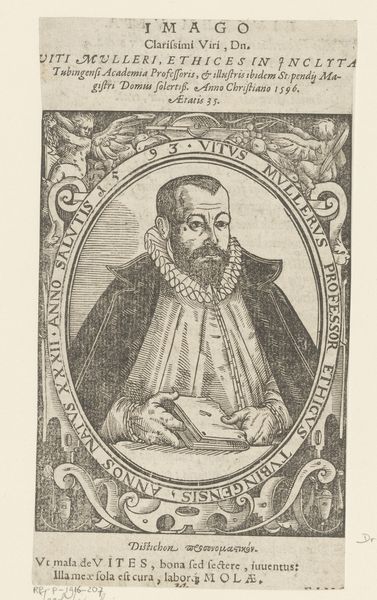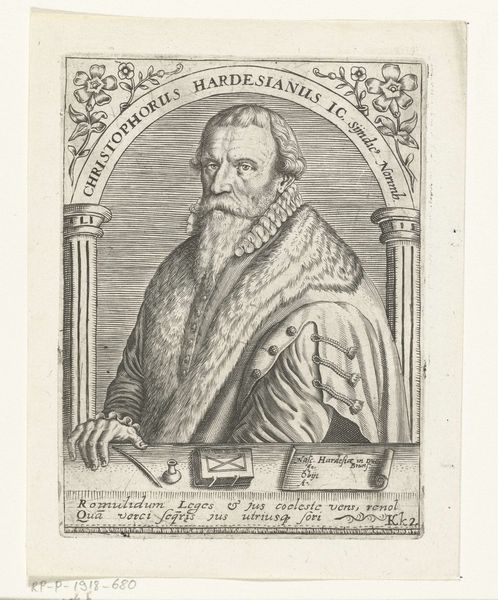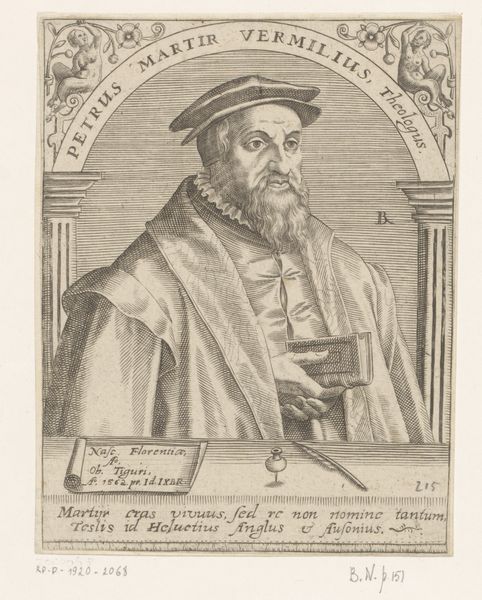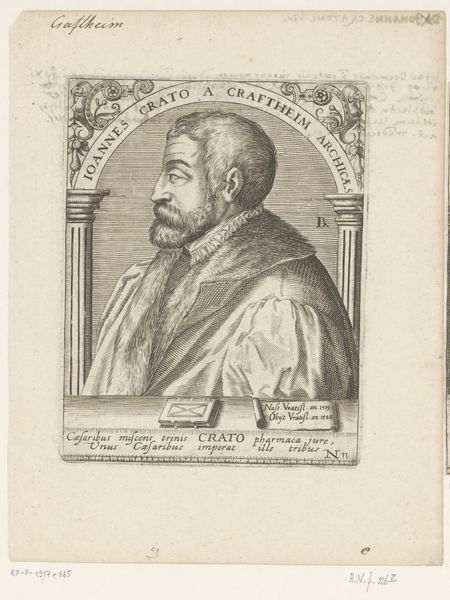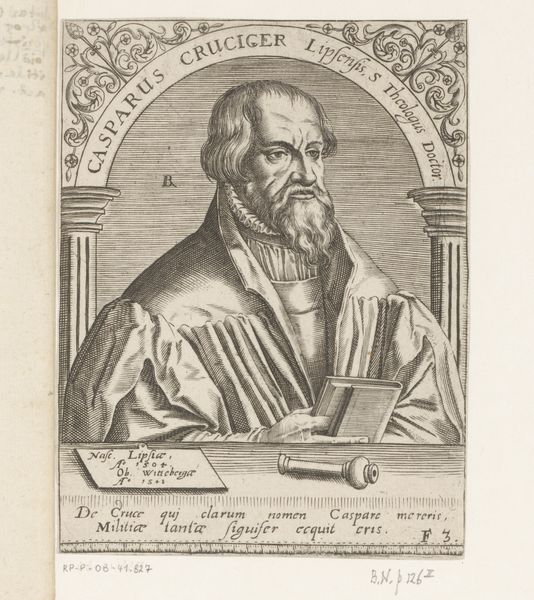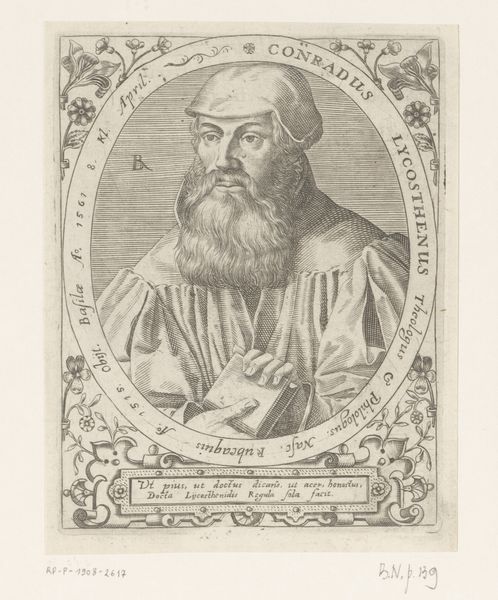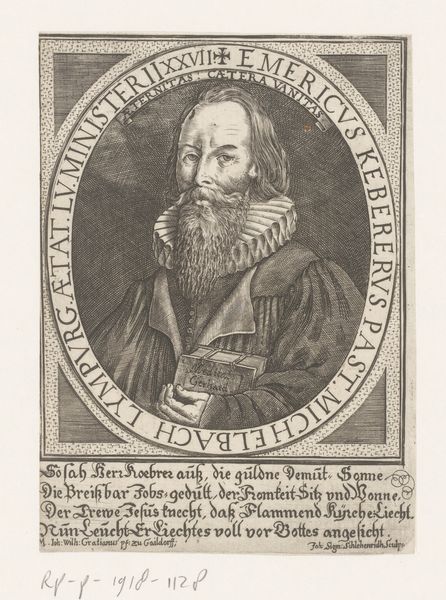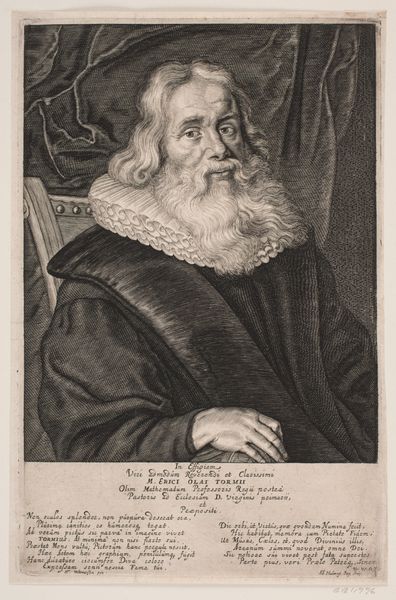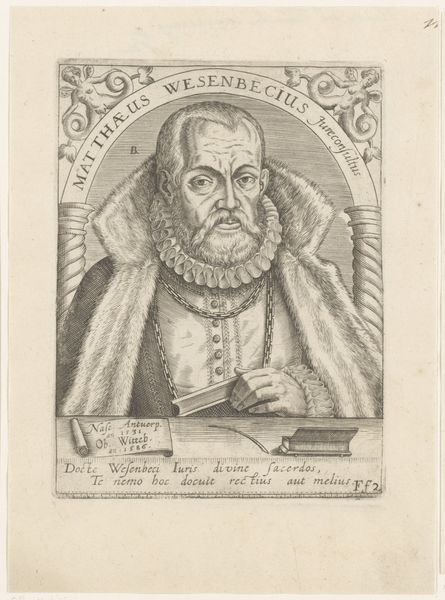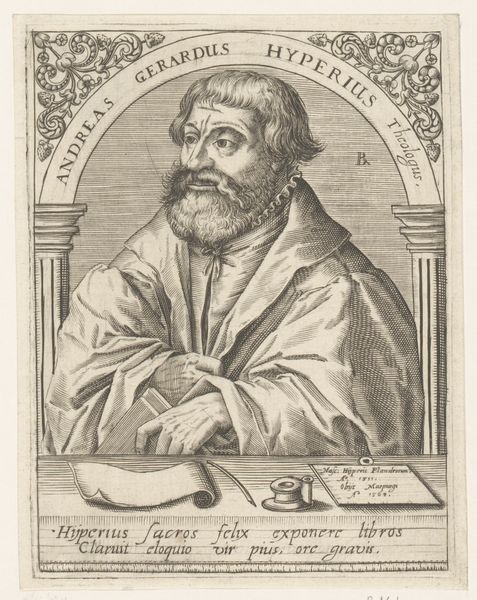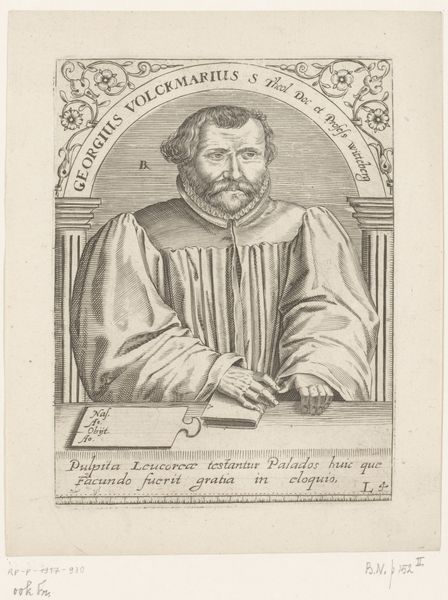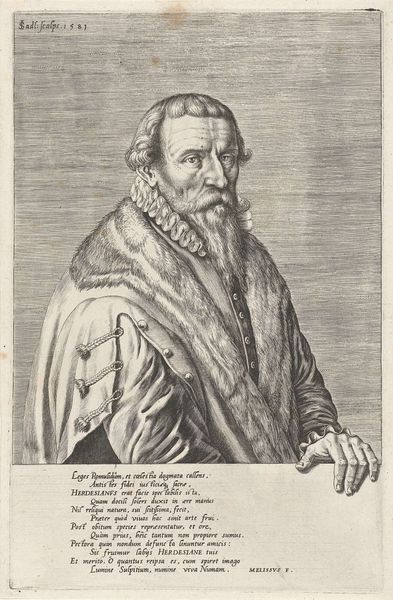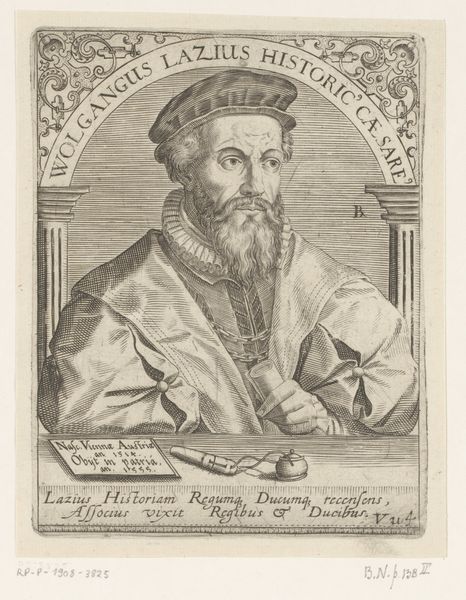
engraving
#
portrait
#
portrait drawing
#
history-painting
#
italian-renaissance
#
engraving
Dimensions: height 140 mm, width 108 mm
Copyright: Rijks Museum: Open Domain
Curator: This is a rather striking portrait isn’t it? "Portret van Pietro Andrea Mattioli," dating back to between 1597 and 1599. The artist was Robert Boissard and what we are viewing is an engraving. What's your first take? Editor: There’s a stoicism to it that's immediately compelling. The meticulous detail in the engraving adds gravity, a kind of timelessness that I appreciate. The gaze of the subject confronts us. I find the sternness rather telling. Curator: Exactly! Considering the time, portraiture was less about capturing physical likeness and more about conveying status and intellectual prowess. Pietro Andrea Mattioli, after all, was a celebrated physician and botanist. That seriousness reflects his intellectual standing, doesn't it? His contributions were deeply rooted in accessing a Eurocentric framework, as medicine was historically not neutral and very gendered and political at the time. Editor: Absolutely, and those details are meticulously included here for public presentation and social acceptance. I think about who was commissioning and circulating these engravings. His fur lined robes, the scholarly book open at his side – they speak volumes about constructed persona and power. How might this image have impacted his legacy? Curator: This portrait offered an important tool in circulating knowledge through an explicitly white, European lens. Prints like these allowed Mattioli's image and reputation to travel across Europe, bolstering his authority within the scientific community and cementing his legacy for a broader public and male dominated scientific communities. We must take that into consideration today. Editor: And by extension, reinforced those historical systems of power in its likenesses and reproductions. Thanks for bringing that critical lens to our viewing, a necessary consideration. Curator: It's crucial to think about how even seemingly straightforward portraits engage with power structures. That critical approach makes us aware that there is not really anything innocent in portraiture. Editor: Precisely. By interrogating images like these, we unearth hidden layers of meaning and acknowledge the historical dynamics shaping how we view and understand the world.
Comments
No comments
Be the first to comment and join the conversation on the ultimate creative platform.
